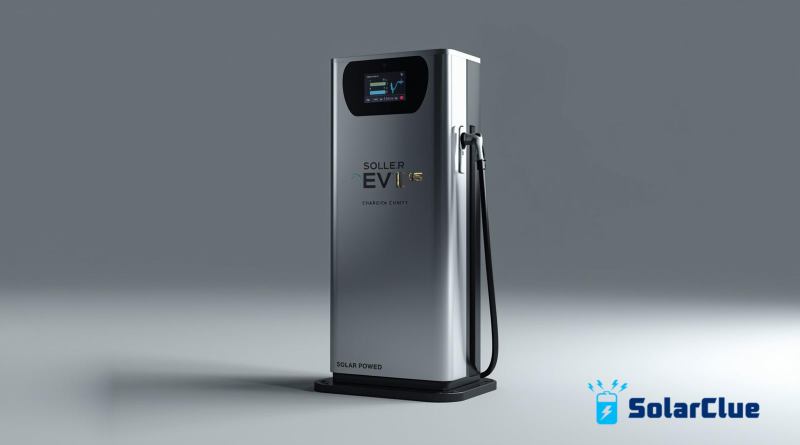Solar EV Charging Unit for Households
A solar EV charging unit for households lets you charge your electric vehicle (EV) using power from solar panels (plus other components), reducing both your electricity cost and carbon footprint.
Typical Components:
| Component | Role |
| Solar panels (PV modules) | Capture sunlight and convert it to DC electricity. |
| Solar inverter | Converts DC from panels to AC (if using AC system) for home appliances / EV charger. Some hybrid inverters integrate EV charging. |
| EV charger (Wallbox / EVSE) | Where you plug in your EV. Home setups are usually 3.3 kW–7.2 kW AC chargers. |
| Electrical wiring & safety | Dedicated circuits, breakers, surge protection, grounding, etc. |
| Battery (optional) | Stores excess solar energy to charge EV or run home loads at night. Improves self-sufficiency. |
| Metering / monitoring | Tracks solar generation vs consumption. Some systems support “solar-first” or dynamic rate control for EV charging. |
Types of Architectures
There are three main ways to design a home solar + EV charging system:
Grid-tied without battery
Solar powers your home and EV charger while the sun is shining. Surplus may export to the grid (if net metering is available). At night or when solar is insufficient, you draw from the grid.
Grid-tied with battery storage
Excess solar charges a battery. EV can charge using solar or battery power, reducing grid reliance.
Off-grid (rare)
Fully standalone with large battery & inverter capacity. Very costly, mainly for remote or specialized use-cases.
Benefits
Cost savings – After installation, the “fuel” cost for your EV can be as low as ₹2–₹4 per kWh (vs ₹7–₹10 from the grid).
Environmental benefits – Lower carbon emissions by using renewable power.
Resilience – With batteries, you can charge even during power cuts.
Incentives – Government schemes (like PM Surya Ghar Muft Bijli Yojana) can reduce costs via subsidies or net metering.
Limitations / Challenges
Upfront cost – Panels, inverter, charger, and optional battery are a large investment.
Sizing – Small solar capacity won’t cover much EV load.
Sunlight dependency – Performance varies with weather/season/location.
Regulatory constraints – May require electrical upgrades, DISCOM approval, and safety compliance.
Battery cost/lifetime – Adds cost and requires maintenance.
ROI uncertainty – Depends on electricity tariffs, solar pricing, and state policies.
What to Consider (India-Specific)
Power requirement / charger rating
Home chargers are typically 3.3 kW–7.2 kW AC. 15A sockets are slower and cheaper but less convenient.
Sanctioned load & electrical upgrades
You might need to increase sanctioned load and ensure wiring/breakers can handle peak demand.
Solar panel capacity
Estimate based on daily driving and sun-hours. A 2–3 kW system may work for light daily use.
Battery storage (optional)
Needed for night-time charging or backup; adds cost and maintenance.
Net Metering / Feed-in Tariff
Policies differ by state. Check if you can export excess power.
Smart features
“Solar-priority” chargers, scheduling to avoid peak tariff hours, and load balancing can optimize usage.
Permits, safety, and quality
Use certified equipment and professional installation with proper earthing.
Subsidies / Incentive schemes
Check central and state rooftop solar incentives that can cut costs.
Example Scenario / Ballpark Numbers (India)
Setup Example:
7.2 kW AC home charger: ₹35,000 – ₹60,000
3–5 kW rooftop solar + inverter: ₹1,00,000 – ₹2,50,000 (depends on brand, location, subsidy)
Optional battery: additional cost
Savings Potential:
Charging cost per kWh may drop to ₹2–₹4 from ₹7–₹10.
Possible ROI: 3–7 years depending on usage and subsidy benefits.
Summary
Home solar EV charging can drastically lower your running costs and environmental impact — but it requires careful planning for system size, permits, and upfront investment. With subsidies and smart setup, it can pay off quickly in India’s sunny climate in 7 years.



